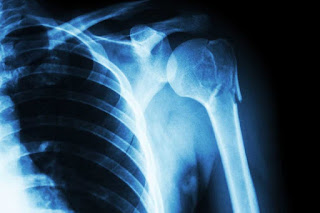Maybe your doctor has finally requested a Toowoomba breast ultrasound. Understand that this one is a painless and safe procedure
using sound waves in seeing the inside of your body. It scans the lumps and
other unusual findings and scans them completely. That way, your doctor would
know what is found in it.
Toowoomba breast ultrasound is designed to identify the
spaces filled with fluid like the cysts. It also is useful when examining both
saline and silicone breast implants. At the Toowoomba breast ultrasound center,
an expert team of nurses, physicians and technologists will be there ready to
provide ultrasound imaging for you.
Tips
Before the Exam
Previous mammograms must be made available to compare the
current breast ultrasound study. The previously-captured mammogram films should
be brought on the day of the exam.
The schedule of the Toowoomba breast ultrasound should
not fall one week before the menstrual cycle. This is due to the reason that
the breasts are still sensitive during this time.
When your doctor instructed you to do so, you need to
bring it with you. The waiting time will as well be kept at a minimum.
Therefore, you need to bring a book, a music player, or a favorite magazine to
pass the time.
During
the Exam
You need to lie on your back just there at the
examination table. Now your hands should be placed on both sides. Apply a warm
gel or a hair-styling gel to your breast. This will help so that the sound
waves travel right from the machine down to your breast.
A small device called the transducer will be placed above
your breast. No need to worry as this is painless. However, mild pressure is
felt right from the transducer.
The sound waves will then bounce off off the tissues
found in your breast. That’s when the waves create echoes. And these echoes are
reflected the transducer. This now converts them into electronic signals.
Through the computer, the signals are thereby produced into pictures. And they
are then shown on a television monitor.
The images moving are viewed immediately. They also are
photographed for further studies and examinations. While the images go through
a review of an imaging physician, this professional will determine the
additional images needed for a complete examination.
The Toowoomba breast ultrasound will take approximately
thirty minutes.
After
the Exam
The Toowoomba breast ultrasound will be reviewed by the
imaging physician. The result will then be sent to the doctor. The doctor will
discuss the results and explain to you what it could mean to your health.
And if you have problems, these will also be discussed to
you. You could request for copies of the pictures on a PC. You may schedule an
appointment for a Toowoomba breast ultrasound if you are decided in having the
examination.
Now, you have learned more about the things to consider
before finally undergoing a Toowoomba breast ultrasound. That way you will know
whatever issue you may have.











